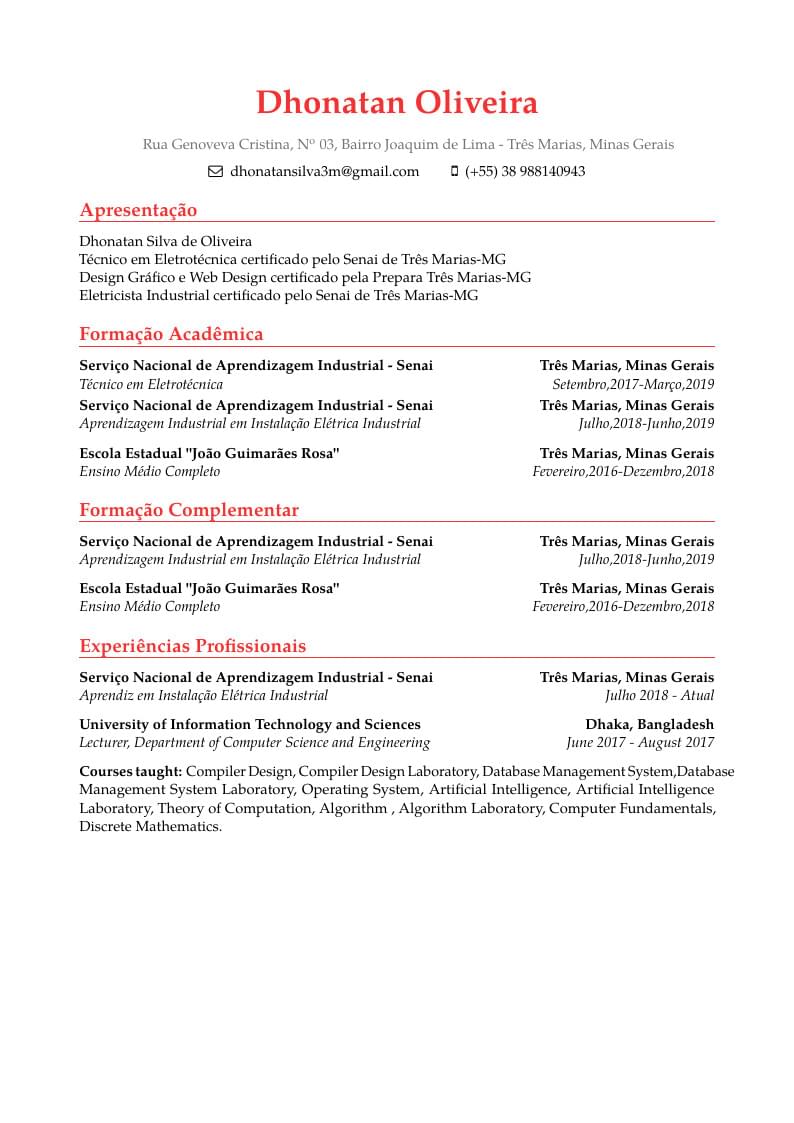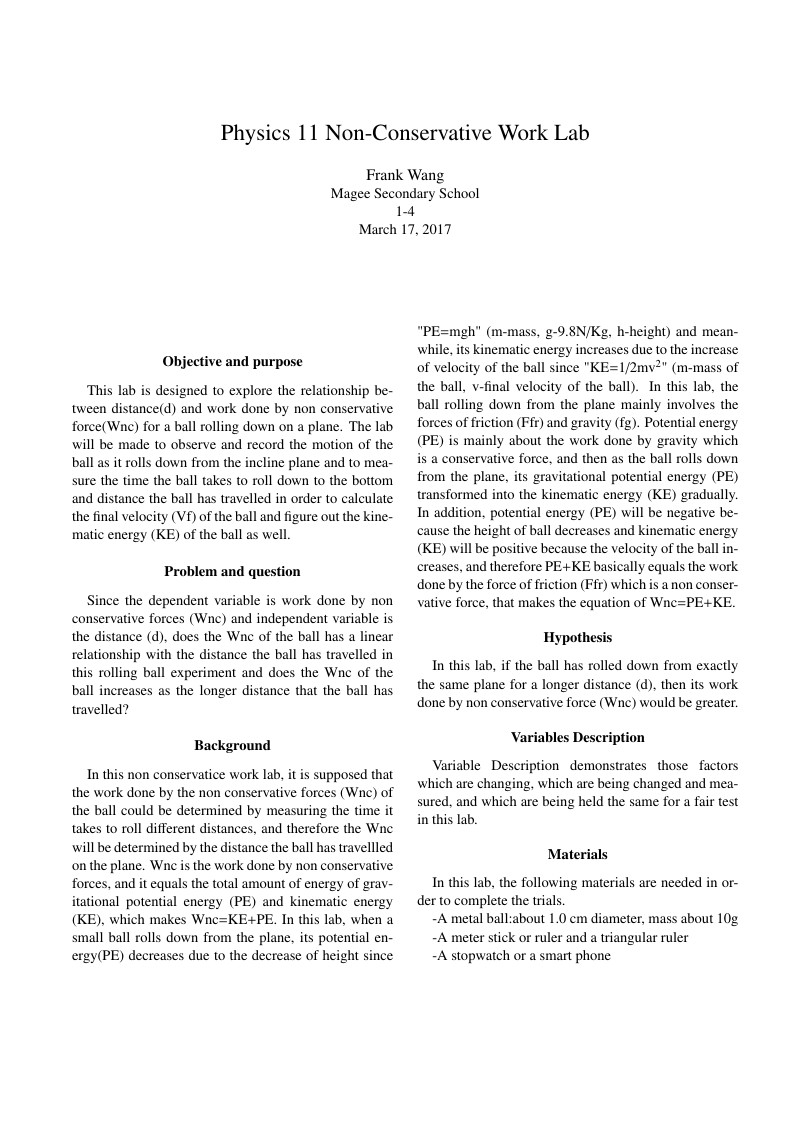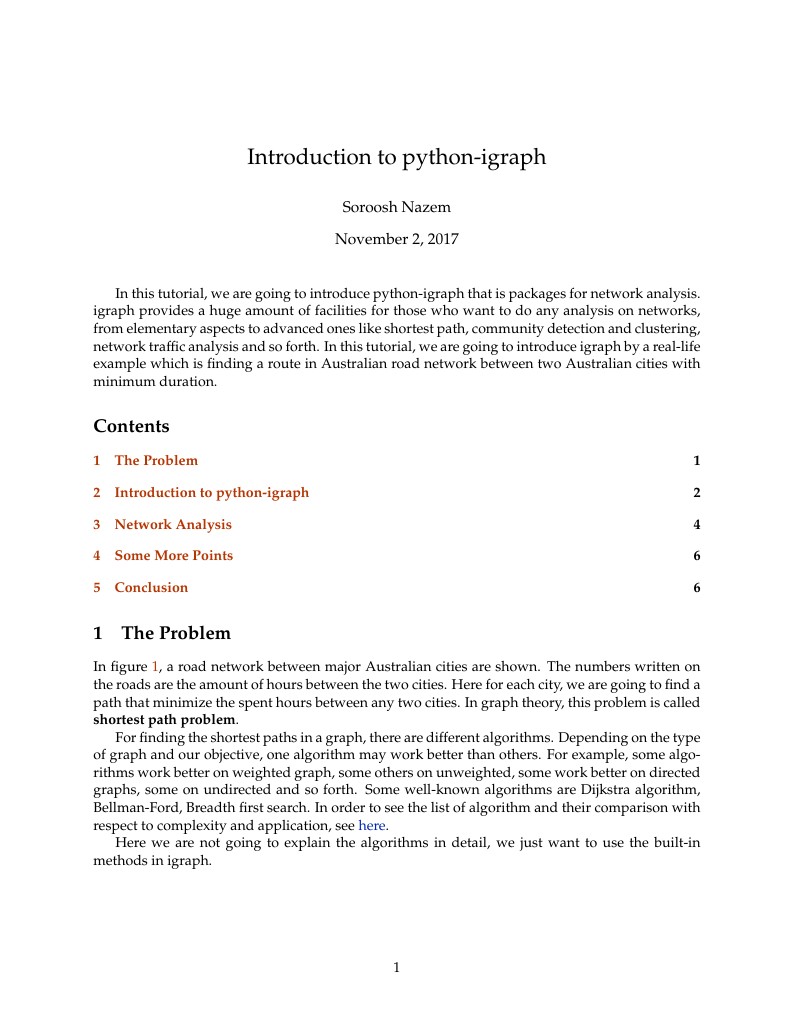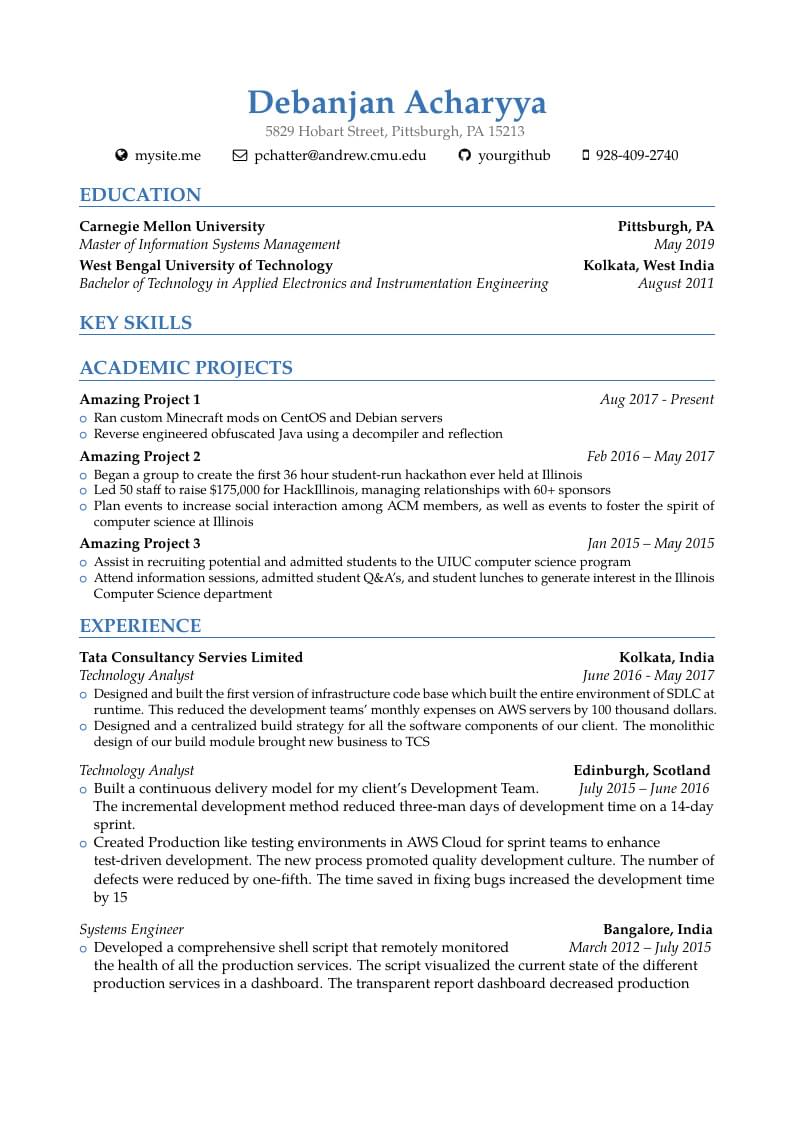overleaf template galleryCommunity articles — Recent
Papers, presentations, reports and more, written in LaTeX and published by our community.

Dhonatan Oliveira's CV. Created using the Modern CV template.

Solving the physics problems you are presented with in an introductory course become easier if each time you sit down to solve a problem, you follow a generalized problem-solving strategy that includes sketching pictures.

Non-conservative work lab

In this tutorial, we are going to introduce python-igraph that is packages for network analysis. igraph provides a huge amount of facilities for those who want to do any analysis on networks, from elementary aspects to advanced ones like shortest path, community detection and clustering, network traffic analysis and so forth. In this tutorial, we are going to introduce igraph by a real-life example which is finding a route in Australian road network between two Australian cities with minimum duration.

Debanjan Acharyya's CV. Created from the Modern CV template.

Seoul Semiconductor’s patented nPola technology increases brightness levels 5 times over existing LEDs. This technology took more than 10 years to develop and is set to revolutionise the LED lighting industry. nPola stands for Numerous polarities and is related to the substrate in which the LED is grown. nPola is grown on a GaN (Gallium nitride) substrate, whereas conventional LEDs use Sapphire or Silicone substrate in which most of the energy is converted to heat instead of light due to a defect caused by lattice mismatch. nPola, however, does not have the lattice mismatch issue like conventional LEDs because the GaN epitaxy has the same crystalline structure as the GaN growth substrate. Furthermore, nPola technology involves the utilization of the one of the nPola non-polar planes in the GaN crystal, either the a-plane or m-plane, whereas traditional LEDs currently utilize the polar c-plane GaN epitaxy on Sapphire or Silicon. nPola LEDs offer reduced electrical resistance, increased electrical efficiency, reduction in colour shift with varying operating current and smaller device size. With nPola, Seoul Semiconductor has already improved the lumen density of LEDs by 5 times over the conventional LEDs based on equivalent die surface area and it expects to further improve this margin to 10 times in future.

Apresentação em português usando um modelo de slide no formato de quadro negro. (See also the Blackboard beamer theme and the original Github page.)

The purpose of this paper is to examine how chronobiologically effective cabin lighting increases comfort and well-being for passengers on long-haul flights.

Baby Near is the project created to assist parents to monitor their children in open or closed environments, mainly with crowds, such as supermarkets, malls, playgrounds, among others. The prototype consists of two ends that communicate with each other by Bluetooth, one with a smartphone and another with an Arduino. If the distance between them is highier than the one set by the parents, the cellphone device emits sounds, vibrations and changes on screen that alert the parent that the distance has been exceeded. In addition, the end of the Arduino also has a short distance electronic tag that can be used by parents to insert information relevant to the child's finder. In this way, the system brings to the parents more speed in the detection of an emergency situation due to the increase of the distance of the child.
\begin
Discover why over 20 million people worldwide trust Overleaf with their work.